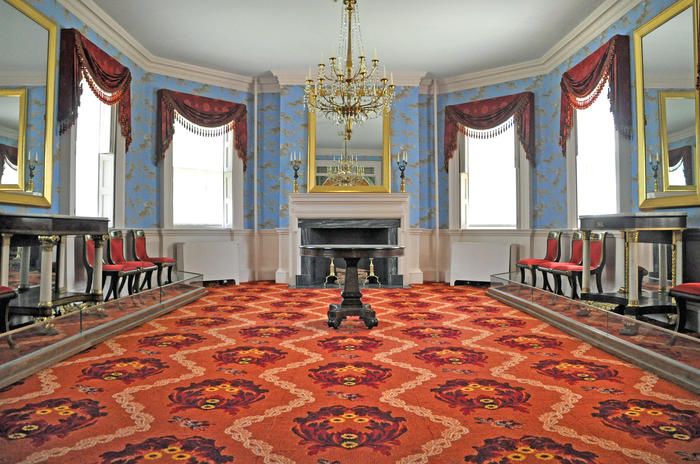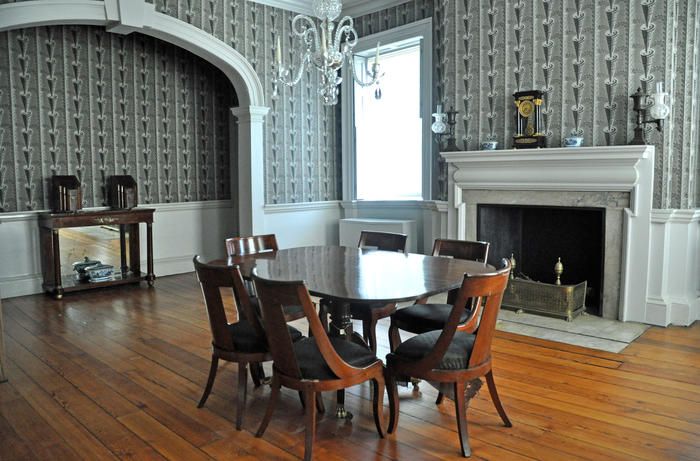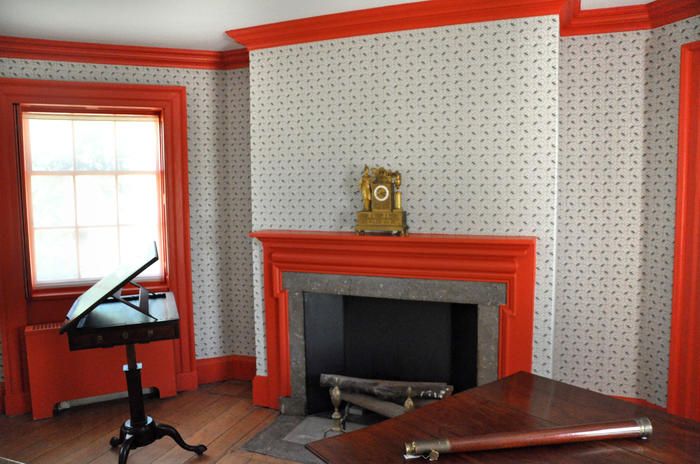Last-Minute NYC Holiday Gift Guide 🎁
We’ve created a holiday gift guide with presents for the intrepid New Yorker that should arrive just in time—



Perched atop a hill in Washington Heights, the Morris-Jumel Mansion has stood witness to more than two centuries of New York City history. The home has evolved with the city around it, serving first as a summer house for a wealthy British colonel, then as headquarters for troops during the American Revolution. It was an inn for weary travelers and today it is a museum that “presents American life from the colonial era to the present by preserving, collecting, and interpreting history, culture, and the arts.” After all the house has seen, it’s bound to hold some amazing secrets!

Built in 1765, the Morris-Jumel Mansion is the oldest residence in Manhattan, and one of the oldest buildings in New York City. The Morris-Jumel Mansion was built as a summer house for British Colonel Roger Morris and his wife Mary Philipse. It was situated on 135 acres of land atop one of the highest points of Manhattan and therefore originally dubbed “Mount Morris.”

Queen Elizabeth II of England has only visited New York City twice, and on one of those occasions, she stopped at the Morris-Jumel Mansion. The visit occurred in July 1976 during the Bicentennial Celebrations. After a busy day of greeting crowds in Lower Manhattan at Federal Hall and Trinity Church, the Queen traveled to Washington Heights to tour the grounds and historic gardens of the mansion. When the tour was complete, she headed off to a fashion show at Bloomingdale’s and later attended a reception at Lincoln Center.
When the American Revolution broke out in 1776, the Morrises abandoned their summer home of Mount Morris. Shortly after the Morrises’ departure, George Washington and his Continental officers made the home their headquarters. The strategic location of the home, atop a high vantage point of the mansion and between the Hudson and Harlem Rivers, helped Washington secure a victory on September 16th during the Battle of Harlem Heights.
Less than a month after the victory of Harlem Heights, Washington and his troops were forced to retreat north to White Plains. The Morris-Jumel Mansion was occupied by both the British and Hessian armies for the remainder of the war.

While writing the hit Broadway musical Hamilton, playwright and performer Lin Manuel-Miranda went to Morris-Jumel for inspiration. The Morris-Jumel Mansion was home to Aaron Burr, former Vice-President of the United States and the man who shot and killed Alexander Hamilton during their infamous duel. Manuel-Miranda holed up in Burr’s former bedroom and penned two songs for the play.

A mile marker on the north-east side of the property dates to 1769. The stone was once located on Kingsbridge Road, a road that stretched all the way up to Albany, and what we know today as St. Nicholas Road by the mansion. The mile marking system measured the distance from downtown New York starting at City Hall in Lower Manhattan. This particular marker once sat at the 11th-mile mark. A plaque was added to the marker in 1912 by The City History Club and it was relocated to the grounds of the Morris-Jumel mansion for safekeeping. The plaque notes a shift in the mile mark’s location after City Hall was moved.
After the American Revolution, the mansion was briefly turned into a tavern. On July 10th, 1790, George Washington returned to the mansion, then a tavern, for a celebratory dinner with his cabinet Secretaries and their spouses. Future presidents John Adams and Thomas Jefferson were all in attendance, as well as Secretary of the Treasury Alexander Hamilton.

Stephen and Eliza Jumel purchased Mount Morris and its surrounding land in 1810. Eliza was a self-made businesswoman who came from a poor Rhode Island family. She made a fortune by buying and selling land and renting properties in downtown Manhattan. Her real-estate ventures made Eliza one of the wealthiest women in New York City. After the death of her husband Stephen, she continued to live in the mansion.
When Stephen and Eliza purchased the home, there was a lot of redecorating to be done. They added the latest creature comforts to the home, including Argand lamps. Argand lamps were an early type of oil lamp that came out in the 1780s. They were nearly ten times brighter than previous lamps and produced a cleaner flame.
After the death of her first husband, French merchant Stephen Jumel, Eliza married Aaron Burr in 1833. The wedding ceremony took place right in the front parlor of her home. The marriage between the former-Vice President and savvy real estate investor was short-lived. After just a year of marriage, Eliza filed for divorce in order to stop Burr from squandering her money. In a contemptuous court battle, both parties accused the other of adultery, using false evidence. The court believed Eliza and she was granted her divorce. Over the course of their brief union, Burr had lost $13,000 of Eliza’s fortune, the equivalent of nearly $400,000 today.
Out of all its former residents, Eliza Jumel lived in the house the longest. She died at the mansion in 1865.

The Morris-Jumel Mansion is considered one of the most haunted places in New York City. It has been the subject of paranormal investigations on television shows like The Holzer Files and Ghost Adventures, and has been featured on the Today Show. Famous paranormal academics and investigators such as Hans Holzer, Zak Bagans, and the Tennessee Wraith Chasers have all visited the site to try and communicate with former residents. People have claimed to see apparitions of all sorts in the mansion, from Hessian soldiers and George Washington to Eliza Jumel, and Aaron Burr.
Are you brave enough to hunt for ghosts yourself? You can join a Paranormal Historical investigation at the mansion!
Just weeks before he was set to premiere his moving picture film at a screening at the Morris-Jumel Mansion, where he was renting rooms at the time, Louis Le Prince mysteriously disappeared. The race to be the first to capture a moving image on film was a fierce one. Many credit Thomas Edison with the achievement, however, filmmaker David Wilkinson, and a growing number of others, believe credit is due to Le Prince.
In his documentary, The First Film, Wilkinson sets out to prove that Le Prince was the first to capture motion on film when he used a camera to shoot family members walking around a garden in Leeds in 1888. After experimenting with projection techniques, Le Prince was set to debut his moving pictures in New York in 1890. While visiting his brother in France, however, Le Prince reportedly boarded a train to Paris and was never seen again. Many theories surround Le Prince’s mysterious disappearance. His widow believed Edison had him killed, while others posit suicide or an escape to start a new life.

In 1841, Eliza Jumel met and hired Anne Hamilton Northup to work in the mansion as a cook. Northup was a free woman of color and wife of Solomon Northup. Solomon was born a free man in New York, but in 1841, he was kidnapped and sold into slavery in the south. The details of these tragic events are retold in his memoir, 12 Years a Slave.
During Solomon’s time as a slave, Anne and their three children worked for and lived with the Jumels. Anne and her daughter Elizabeth worked in the mansion along with Anne and Solomon’s son Alonzo. A second daughter, Margaret, was sent to live with Eliza’s relative, Mary Chase, in Hoboken, New Jersey. According to the Morris-Jumel Mansion, it is believed that Eliza may have assisted Anne in her efforts of freeing her husband from slavery.
Next, check out The Top 7 Oldest Buildings in Manhattan, NYC
Subscribe to our newsletter